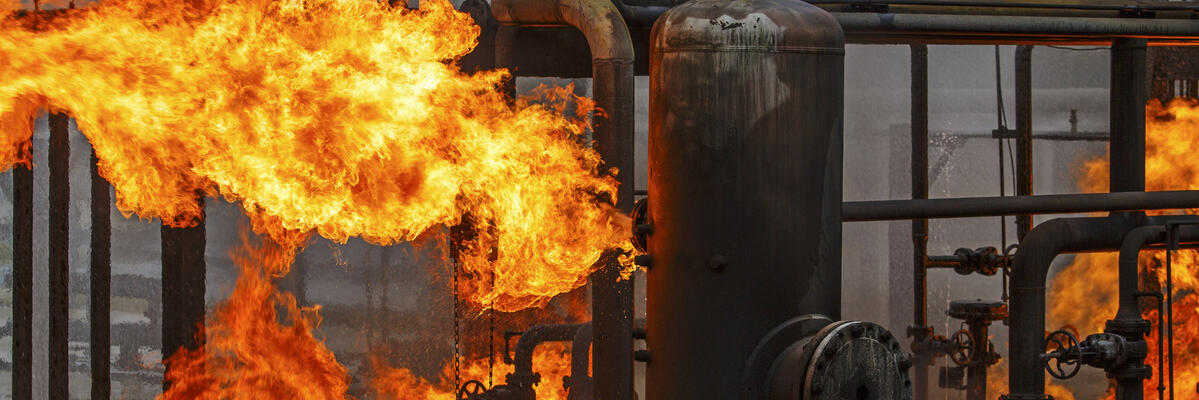Media Contacts:
Environmental Justice Health Alliance: Michele Roberts, (202) 704-7593, mroberts@comingcleaninc.org; or Eric Whalen, (971) 998-8786, ericwhalen@comingcleaninc.org
BlueGreen Alliance: Abby Harvey, (202) 706-6904, aharvey@bluegreenalliance.org
Paul Orum, independent expert on chemical facility safety, (202) 507-3211, paul_orum@yahoo.com
Trump Administration Rollback Will Lead to More Chemical Disasters
Worker and Community Advocates Denounce Repeal of Chemical Disaster Prevention Rule
This morning the Trump Administration sacrificed the health and safety of workers at high-risk chemical facilities and the millions of people who live, work, attend school, and worship near these facilities by rescinding common sense measures that would have prevented chemical disasters. Despite overwhelming public support for the modest improvements to the Environmental Protection Agency’s chemical disaster prevention rule (the Risk Management Plan, or RMP, program) adopted during the Obama Administration – reflected in support from over 150 public health, worker, environmental justice, and national security organizations – the Trump EPA has now reversed those Amendments at the behest of the chemical industry. The rollback weakens disaster prevention requirements at over 12,000 high-risk industrial and commercial facilities across the United States, putting over 177 million residents and over 1 million workers at greater risk of a chemical disaster.
Workers at RMP facilities (which use or store the most dangerous, high risk chemicals) and communities at the fenceline of these hazardous operations who are part of the broad and diverse Coalition to Prevent Chemical Disasters expressed outrage at the Administration’s reversal of the modest RMP Amendments.
“Once again, workers, communities of color, and low-income communities have been placed squarely in harm’s way by the Trump Administration,” said Michele Roberts, National Co-Coordinator of the Environmental Justice Health Alliance for Chemical Policy Reform (EJHA), a network of more than 30 grassroots environmental justice organizations. “EPA’s own analysis demonstrated that our communities are at disproportionate risk of chemical disasters, on top of the many other toxic hazards we experience daily. Ignoring that evidence is further proof that this Administration has no regard for the health and safety of workers and communities. This is environmental racism.”
“Rolling back common sense safety measures at high-risk chemical facilities is another example of the Trump Administration letting industry write its own rules, while ignoring safety risks to workers. We’re concerned about the safety of both the workers at these facilities, and the people who live near these operations. Nationally, more than 1 million workers at over 12,000 high-risk facilities will now be in even more danger because these companies just got a free pass on safety, ” said Debra Coyle McFadden, Executive Director, NJ Work Environment Council, a coalition of 70 labor, community and environmental groups in New Jersey.
“Recklessly endangering the lives of millions of Americans as the EPA has done with this rule is unconscionable. This action shows once again that the Trump administration does not prioritize the health and safety of workers and communities, but rather seeks to give corporations free reign to act irresponsibly without consequence,” said Jason Walsh, Executive Director of the BlueGreen Alliance, which unites America’s largest labor unions and its most influential environmental organizations.
The Administration’s action needlessly endangers 177 million people who live in the potential chemical disaster zones of over 12,000 high-risk facilities across the country that use or store highly dangerous chemicals, over 1 million workers at those facilities, and almost 20 million children who attend school in these danger zones. Important policy elements that would have helped to prevent future disasters but are now eliminated by the rollback include:
- Ensuring that lessons are learned from serious incidents. Facilities that have incidents that resulted, or could have resulted (i.e. “near misses”), in a catastrophic chemical release would have had to identify the “root cause” of the incident, and facilities that had reportable incidents would have been required to have an independent third party conduct a compliance review.
- Helping communities prepare for disasters by requiring facilities to provide information that is already publicly available to community members (including school administrators and hospital managers) upon request, including chemical hazard information, accident history, dates of past emergency response exercises, and emergency response program information.
- Identifying safety opportunities by requiring facilities in industrial sectors with the worst safety records to assess options that might remove hazards as part of their safety planning. Although 30 million Americans in 47 states no longer live within disaster zones of 284 facilities that already found and adopted less hazardous options, many communities with concentrations of high-risk facilities are still in constant danger.
The Coalition to Prevent Chemical Disasters is composed of over 100 environmental justice, labor, public health, national security, and environmental organizations who work together to protect communities and workers from chemical releases and explosions. Learn more at http://preventchemicaldisasters.org/
More background on RMP facility hazards and risks to workers and fenceline communities can be found at:
- EPA National Environmental Justice Advisory Council (NEJAC) Recommendation that EPA Abandon Its Attempt to Rescind the Chemical Disaster Rule: https://www.epa.gov/sites/production/files/2019-08/documents/nejac-recommendations-risk-management-programs-may-3-2019.pdf
- Life at the Fenceline: Understanding Cumulative Health Hazards in Environmental Justice Communities: https://ej4all.org/life-at-the-fenceline
- Who’s in Danger: Race, Poverty, and Chemical Disasters: https://comingcleaninc.org/resources/whos-in-danger-report
- BlueGreen Alliance Urges EPA to Keep Chemical Disaster Rule: https://www.bluegreenalliance.org/wp-content/uploads/2018/08/BlueGreen-Alliance-Comments-Docket-EPA-HQ-OEM-2015-0725-0890-Final.pdf
- Kids in Danger Zones: One in Three US Schoolchildren at Risk from Chemical Catastrophes: https://www.foreffectivegov.org/kids-in-danger-zones

